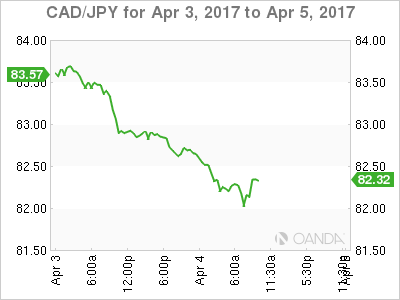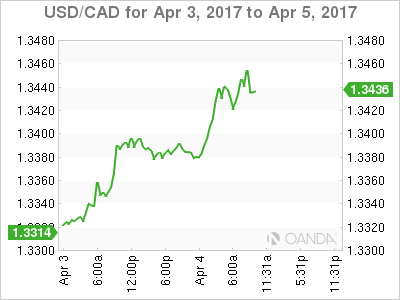Following three consecutive monthly surpluses, Canada’s merchandise trade balance with the world posted a $972 million deficit in February. Exports were down 2.4%, with decreases in 8 of 11 sections. Imports edged up 0.6%, on higher imports of special transactions trade and motor vehicles and parts.
Widespread declines in exports
After reaching a record high in January, total exports fell 2.4% to $45.3 billion in February on lower volumes. Year over year, exports were up 4.4%. There were lower exports of farm, fishing and intermediate food products, aircraft and other transportation equipment and parts, as well as consumer goods. In February, exports excluding energy products were also down 2.4%.
Following a record high in January, exports of farm, fishing and intermediate food products fell 10.6% to $2.7 billion in February, returning to December levels. Canola contributed the most to the decline in February, down 33.7% to $552 million. This followed three consecutive monthly increases during which exports of canola more than doubled, reflecting higher Chinese demand for Canadian canola. Overall, volumes were down 10.2% and prices declined 0.5%.

Exports of aircraft and other transportation equipment and parts decreased 15.2% to $1.6 billion in February. Leading the decline were exports of aircraft, down 23.1% to $447 million in February, a third consecutive monthly decrease. Exports of boats and other personal transportation equipment also contributed to the movement, down 41.1% to $181 million in February. This represented a return to December levels, following a $134 million increase in January on higher exports to Saudi Arabia.
In February, exports of consumer goods were down 4.3% to $5.7 billion, a second consecutive monthly decrease. Miscellaneous goods and supplies led the decrease, down 17.5% to $640 million, mostly on lower exports of gold coins to the United States.

Special transactions and trucks lead increase in imports
Total imports edged up 0.6% in February to $46.3 billion, despite declines in 7 of 11 sections. Volumes and prices were both up 0.3%. Higher imports of special transactions trade, motor vehicles and parts, and farm, fishing and intermediate food products contributed the most to the increase. Year over year, total imports rose 1.4%.
Special transactions trade led the increase in imports in February, up 33.1% to $815 million. This commodity grouping includes low-valued transactions, value of repairs to equipment, as well as an estimate for the late documentation of transactions. The increase for this section in February was due mainly to a return from atypically low import levels of low-valued transactions in January.
Imports of motor vehicles and parts rose 1.8% to $9.1 billion in February, the highest value since the record high set in August 2016. Imports of passenger cars and light trucks led the increase, up 1.9% to $4.2 billion. This ramp up in inventory was potentially in anticipation of higher truck sales in March. For the section as a whole, volumes were up 1.9% while prices edged down 0.2%.
Imports of farm, fishing and intermediate food products rose 8.7% to $1.4 billion in February. Overall, volumes were up 4.6% and prices increased 3.8%. Imports of food and tobacco intermediate products rose 14.1% to $321 million, mainly on higher imports of tobacco. This increase followed two months of particularly low imports.

Trade deficit with non-US countries widens
In February, imports from countries other than the United States increased 4.9% to $16.4 billion, mainly on higher imports from Japan, Norway and Brazil. In contrast, exports to countries other than the United States fell 5.9% to $11.0 billion in February. Lower exports to China (mainly canola) and South Korea (mainly coal) were responsible for the decrease in February. As a result, Canada’s trade deficit with countries other than the United States widened from $4.0 billion in January to $5.4 billion in February.
Imports from the United States decreased 1.6% to $29.9 billion in February, led by lower imports of aircraft and crude oil. Exports to the United States were down 1.2% to $34.4 billion. As a result, Canada’s trade surplus with the United States widened slightly from $4.4 billion in January to $4.5 billion in February. The Canadian dollar gained 0.5 cents US relative to the US dollar in February.
Real trade balance turns to a deficit
In real (or volume) terms in February, exports fell 2.5% and import volumes were up 0.3%, leading to Canada’s first real deficit since September 2016. The $132 million real trade deficit in February followed a $1.0 billion surplus in January.
Revisions to January imports and exports
Revisions reflected initial estimates being updated with or replaced by administrative and survey data as they became available, and amendments made for late documentation of high-value transactions. Exports, originally reported as $46.5 billion in last month’s release, were virtually unchanged in the current month’s release. Imports in January, originally reported as $45.6 billion in last month’s release, were revised to $46.0 billion.
